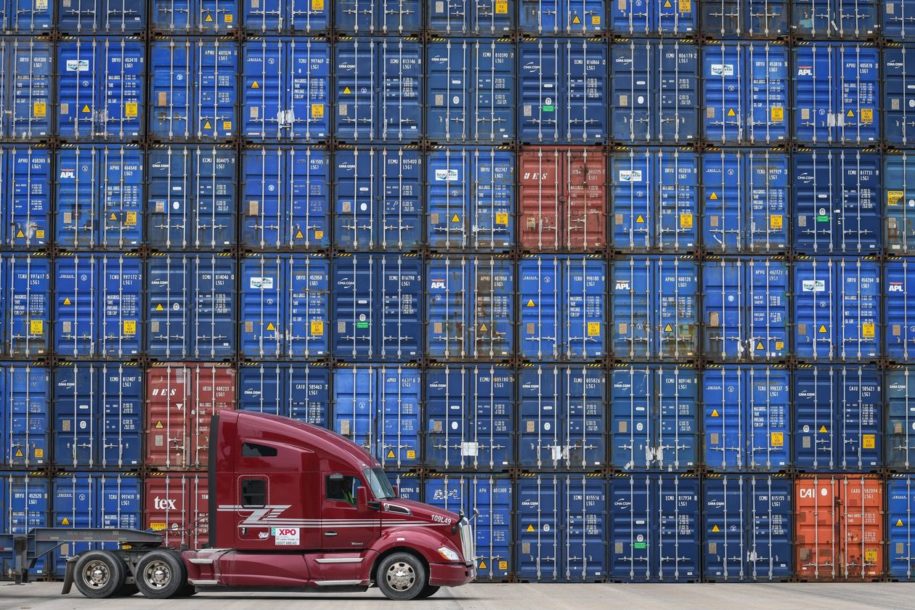
China faces the risk of export congestion due to lack of container shells
The Chinese economy’s strong recovery after COVID-19 was facing new obstacles: Container shortages on a global level, pushing freight rates to record highs, leading manufacturers and exporters unable to respond to orders that are recovering quickly.
China’s merchandise exports rose 21% in November from the same period last year, as the world’s manufacturing leader shipped mountains of electronics, toys, clothing, and personal protective gear. Many other consumer goods are in high demand around the world.
But due to the imbalance in the trade balance related to the import and export structure of the world’s second largest economy – about 1 out of 4 containers of export are imported, along with many containers coming to China. The country was caught in the yoke due to the pandemic, so there was a serious shortage of container shells, which is a barrier to the flow of goods exports.
Many manufacturers and exporters in China said that they are facing the situation of receiving many orders, but cannot export. The boxes are filled, factories and warehouses are about to have no storage space. The reason is that it is difficult to order containers, as everyone is rushing to sourcing at high prices.
According to United Nations trade data, about 60% of global goods are transported by sea, packed in containers, for a total of about 180 million containers worldwide. The China Container Association (CCIA) said that the average turnaround time of a container has jumped 100 days, compared with 60 days ago, which was caused by the COVID-19 pandemic. Many containers are located in Europe, North America because of the lack of goods exported back to China, due to the imbalance of import and export in the world’s second largest economy.
The fact that many cargo planes are located because of the epidemic also put additional pressure on the transportation of goods by sea. Combining these factors causes a sharp increase in shipping rates. The cost of transporting a container from China to the US East Coast in the first week of December reached a record high of 4,928 USD / container, an increase of 85% compared to the date of June 1. The rates to Europe and the Mediterranean through the Suez Canal rose 142% and 103% over the same period, respectively.
Container manufacturers have also adjusted and adapted in the direction of expanding production capacity to meet demand, but not yet penetrated. Container volume per month in China – accounting for about 96% of global production, jumped to the highest level in five years, with 300,000 cases in September, according to CCIA data.
This output then stands at high levels, but the shortage of steel, laminate flooring and highly skilled welders will be the new barrier. This is a product that requires technical specifications, ensuring high safety, because of the potential risk of breaking, breaking during the loading and unloading of goods.
The black market and prices soared
Realizing an opportunity to make money, some private Chinese companies sought to stockpile containers to lease them at the highest price, creating a new business.
“Everything is like the black market. You have to pay extra to get containers from private factories, not freight forwarding companies. Each container had to cost 500 USD, while the freight rate was 3 times higher than normal. Everyone is looking for ways to make money, only people like us do not, ”said a representative of a supplier of leather goods, toys and stationery based in Yiwu, Zhejiang.
The unnamed character said it would take 2-4 weeks to get a container, without knowing for sure or not. According to an employee at the shipping company Southwest Logistics in Ningbo, Zhejiang, the freight for a container exported from China to South America was previously only $ 3,000, but now even $ 6,000. / container is also unlikely to be booked on board.
Not only in China, shipping associations in Korea, Malaysia and many countries have asked the government to help compensate for the high rates. Some exporters choose the other way of exploiting the domestic market, selling in the country. However, most have to accept a solution that pays a higher price. Because no one is patient enough to wait for the price to drop. There is no container, no shipping and no money is collected, which will directly affect the cash flow of the business.
Shipping industry watchers believe that container scarcity will continue until the COVID-19 vaccine is widely distributed, and global air travel is essentially resuming. .
Source:baotintuc

If you need assistance with import and export of international goods, you can contact our Smart Link team. guide service consulting as well as necessary related customs procedures.


































